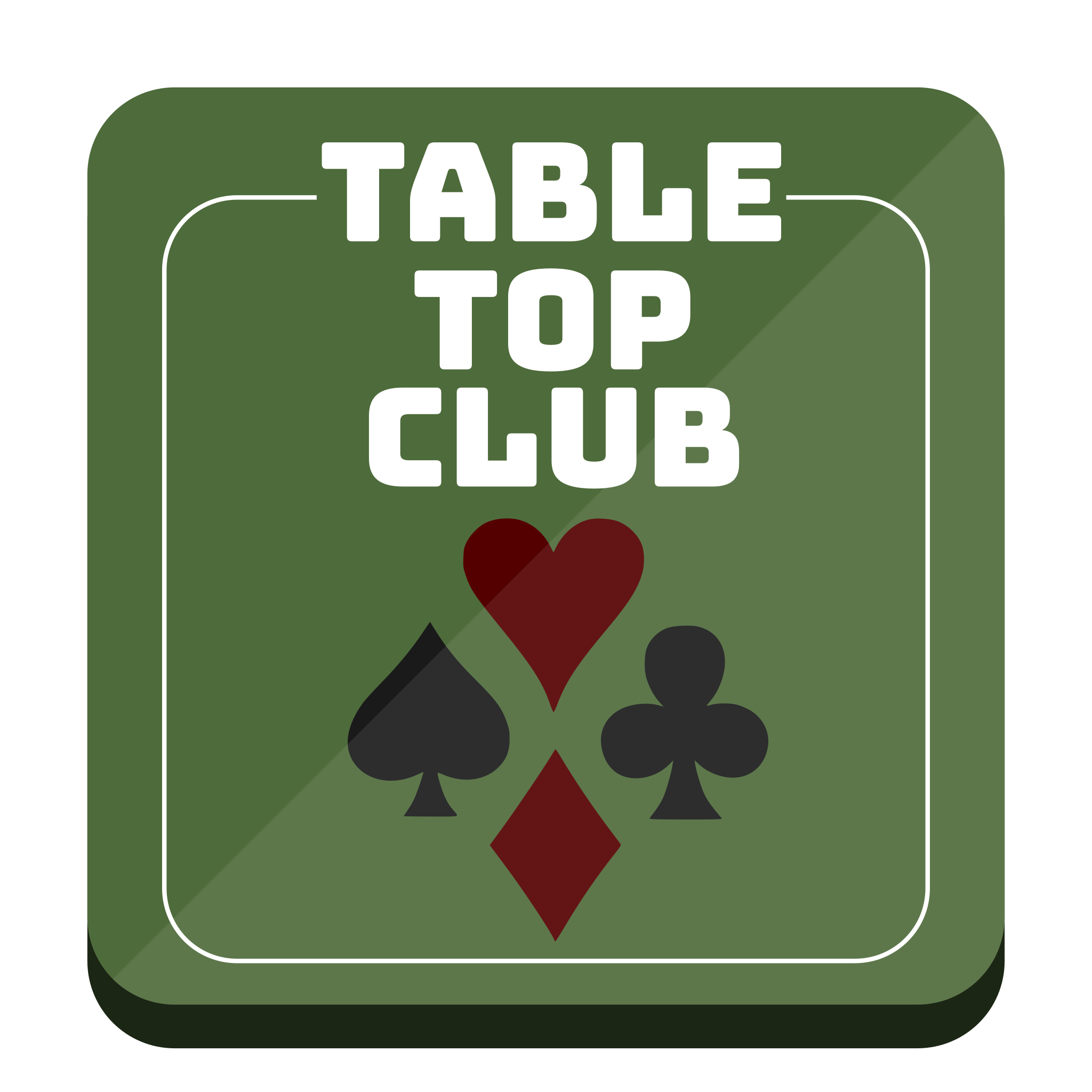Adding notebook templates
Contents
Adding notebook templates#
In Tabletop Club, you can keep track of things like scores or character attributes using the in-game notebook, which is used to store persistent text (that is, text that stays there after you exit the game). Using this tutorial, you will be able to create a template that can be chosen when a new page is added to the notebook.
There are two kinds of notebook templates: text-based and image-based. Text-based pages act a lot like regular text files, where the player is given an infinite amount of space to type text, but it may not be as intuitive to use. Image-based pages have an image in the background, and a number of pre-defined textboxes in the foreground that can be typed into individually.
Adding a text-based template#
Text-based templates are very easy to set up: all you need is a text file
(.txt) containing the text you want, which is placed in the templates
folder of your asset pack, like so:
MyAssetPack
└── templates
└── My Template.txt
And that’s it! You can then open the Notebook in-game, create a new page using the template, and you should see the contents of the text file on the page.
Adding an image-based template#
There are two steps for adding an image template: the first is to take the image
you want as the background, and place it inside the templates folder in your
asset pack, like so:
MyAssetPack
└── templates
└── My Template.png
Secondly, we need to create a config.cfg file to define our textboxes.
Open a text editor, and save a file next to the image in the asset pack as
config.cfg. In this file, we’ll define the textboxes property for our
image, like so:
; MyAssetPack/templates/config.cfg
[My Template.png]
; If you want, you can also put a description and other details, but these
; are completely optional.
desc = "This is my first template!"
author = "Bob"
license = "CC0"
; This is where we define the property - the curly braces are mandatory.
textboxes = {
}
For each textbox, we can set a number of details to get the template to look exactly how we want - but for now, we’ll focus on the main ones:
id: The unique identifier for the textbox.x: The horizontal position of the top-left corner of the textbox.y: The vertical position of the top-left corner of the textbox.w: The width of the textbox.h: The height of the textbox.
Note
All of the units are in pixels, and the origin (0, 0) is at the top-left corner of the image, so increasing “x” moves the textbox right, and increasing “y” moves the textbox down.
As an example, a textbox may be defined like this:
"my_textbox": { "x": 100, "y": 100, "w": 500, "h": 200 }
This would create a textbox called my_textbox that is 100 pixels right, and
100 pixels down from the top-left corner of the image, as well as 500 pixels
wide and 200 pixels high.
In the config.cfg file, you would have multiple of these textboxes, all of
them seperated by a comma:
; MyAssetPack/templates/config.cfg
[My Template.png]
textboxes = {
; The example above, but inside the curly braces. Note the comma at the
; end, which allows us to define another textbox after it.
"my_textbox": { "x": 100, "y": 100, "w": 500, "h": 200 },
; A second square-shaped textbox, to the right of the first.
; Note that the last textbox in the list doesn't need a comma after it.
"second_textbox": { "x": 700, "y": 100, "w": 300, "h": 300 }
}
With that saved in config.cfg, if you launch the game, open the notebook and
use the template when creating a new page, not only should you see the image,
but also the two textboxes in the top-left corner of the image!
See more#
Now you know how to create templates for the notebook! If you want to know more about templates, and how to customise textboxes further, see Template.
